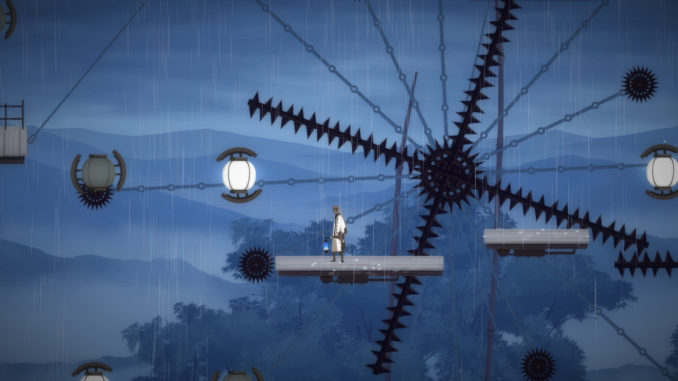
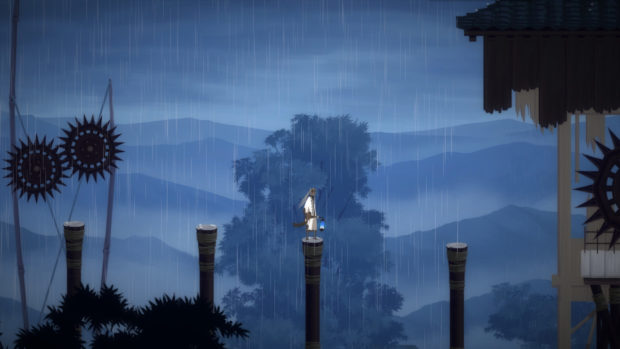 When a game starts with a warning that it is difficult enough to frustrate you to the point of not enjoying it and that if you feel yourself getting too upset, instructs to put it down and come back later, you know you’re in for a bumpy ride. In the case of Shio, brilliantly thought out mechanics, and ingenious level design creates a strong difficulty curve that doesn’t feel artificial or cheap, and only leaves you determined to complete the next obstacle that lies in your path.
When a game starts with a warning that it is difficult enough to frustrate you to the point of not enjoying it and that if you feel yourself getting too upset, instructs to put it down and come back later, you know you’re in for a bumpy ride. In the case of Shio, brilliantly thought out mechanics, and ingenious level design creates a strong difficulty curve that doesn’t feel artificial or cheap, and only leaves you determined to complete the next obstacle that lies in your path.
Make no mistake, Shio is a hard game. You must master the somewhat “floaty†controls, and have near frame-perfect timing to surmount the challenges that lie in front of you. Shio’s unique main mechanic is a hand lantern that allows you to double jump using other floating lanterns placed throughout the levels. It’s this mechanic that allows for some incredibly creative level design and forces you to think outside the box when approaching each situation.
Shio is the perfect example of, “show, don’t tell.†tutorials. Every time you are faced with a new obstacle that you don’t know how to deal with, it is presented in a creative, and somewhat obvious way to naturally teach you your best course of action using basic deduction skills, as well as calling back to previous challenges you have already overcome. One of the best examples of this is when you come across a gap that you know is too big to jump across, but upon further inspection, you notice that in the middle, the rain is being stopped by some invisible object. At this point in the game, you already know that invisible platforms exist, although they have been revealed through the use of the lanterns, and have yet to be shown in the manner. Through a little trial and error, you realize that there is indeed a platform there, and you can cross the gap using it. After learning how to deal with this challenge in its most basic form, it is then employed in a more difficult manner, as well as with the addition of other obstacles, forcing you to think on your feet and adapt to situations on the fly.
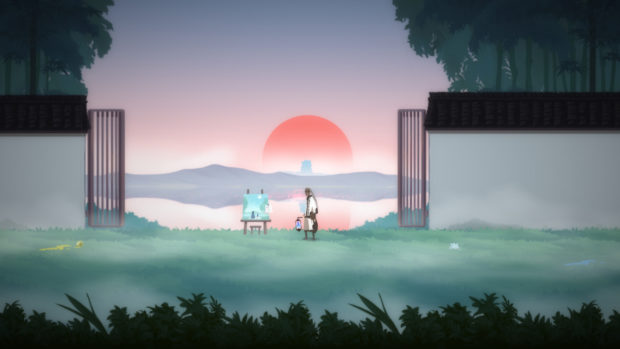 The story of Shio is best described as subtle. Exposition is never shoved in your face, and in fact, it is completely optional. The story is told to you through the use of things like diary entries, small hints in the dialogue between the player character and NPC’s, as well as details in the environment as you progress through the game. For such a vibrant and colorful adventure, the story of Shio is a stark contrast. It is a melancholy tale, and when combined with the indirect nature of the way it is told to you when you finally do grasp the true nature of the narrative, it will strike a chord in your heart and make you truly feel for the games silent protagonist.
The story of Shio is best described as subtle. Exposition is never shoved in your face, and in fact, it is completely optional. The story is told to you through the use of things like diary entries, small hints in the dialogue between the player character and NPC’s, as well as details in the environment as you progress through the game. For such a vibrant and colorful adventure, the story of Shio is a stark contrast. It is a melancholy tale, and when combined with the indirect nature of the way it is told to you when you finally do grasp the true nature of the narrative, it will strike a chord in your heart and make you truly feel for the games silent protagonist.
Beyond a shadow of a doubt, Shio is a masterclass in storytelling and level design. But no game is complete without a solid soundtrack. It is one of the most, if not the most important aspect of a game to fully flesh out the atmosphere and tone. The background music of Shio is a treat for your ears, evoking strong emotion with clear influences, and somber stylings. Each level is complete with original songs that provide the perfect ambiance.
For a game that started as a project by a college student who wanted to present his art in a unique way, Shio developed into a remarkable atmospheric action platformer that can be enjoyed on multiple levels. It’s unique mechanics, masterful level design, ethereal soundtrack, and subtle storytelling add up to one magnificent game that is greater than the sum of its parts. Each aspect of the game is gone over with painstaking detail in a way that truly broadens the horizons of the medium.
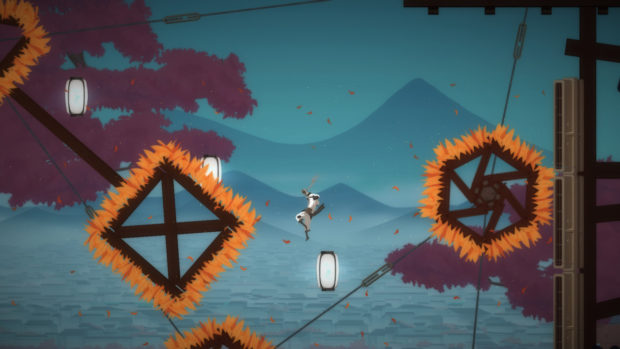
The Good:
Unique Mechanics: The use of the floating lanterns as an anchor that allows you double jump makes for some of the most creative and challenging platforming puzzles in recent memory.
A Somber Story: The subtlety of the exposition makes a fairly simple story feel fresh and adds a layer of depth to the game when putting together the puzzle pieces that are given to you.
Atmospheric Soundtrack: A game with a poor soundtrack is a game that feels incomplete. Although, this is not the case for Shio, which features fantastic original compositions for each level.
The Bad:
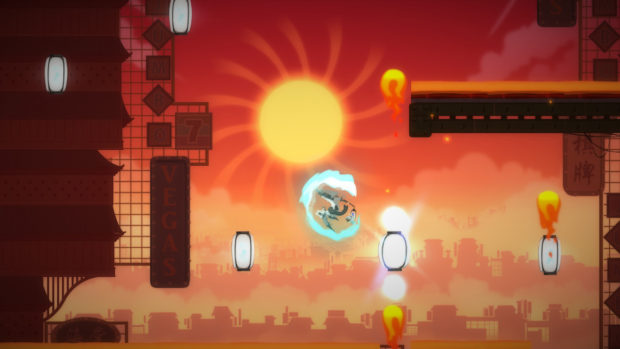
Occasional Screen Tearing: Every now and then the game will skip a few frames, which will severely throw you off when such precise actions are necessary. Fortunately, though, this is a rare enough occurrence that it doesn’t detract from the game.
Final Thoughts:
Shio joins the ranks of indie gems such as Celeste, and Super Meat Boy. It boasts a difficult but fair challenge and is executed perfectly. It has tremendous replayability due to its penchant for speedruns, as well as an intricate story that will reveal more and more detail with multiple playthroughs.


Leave a Reply